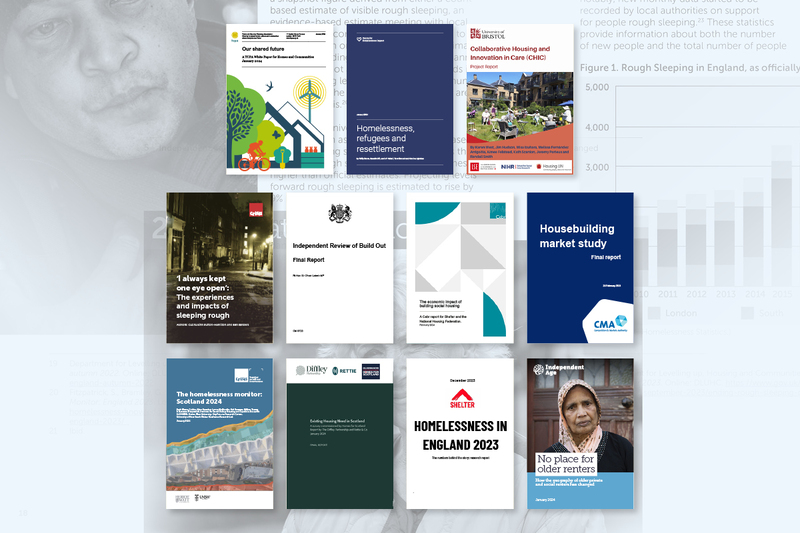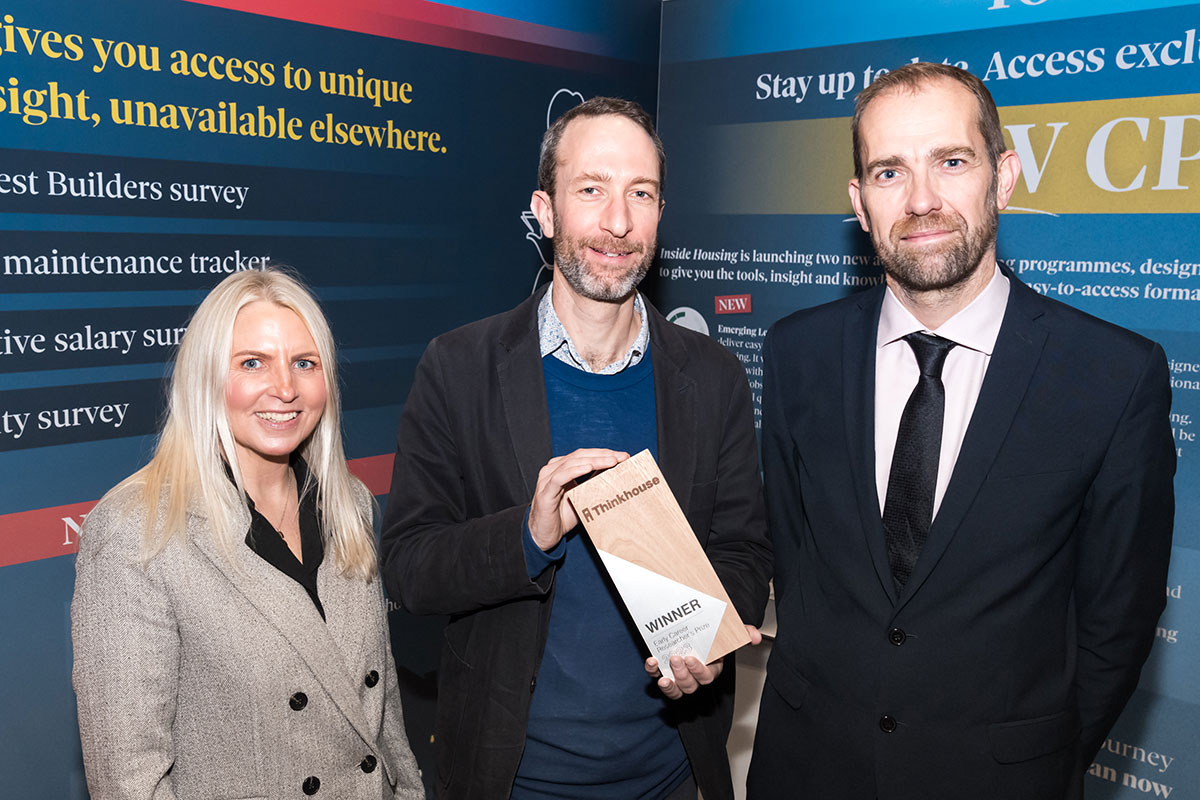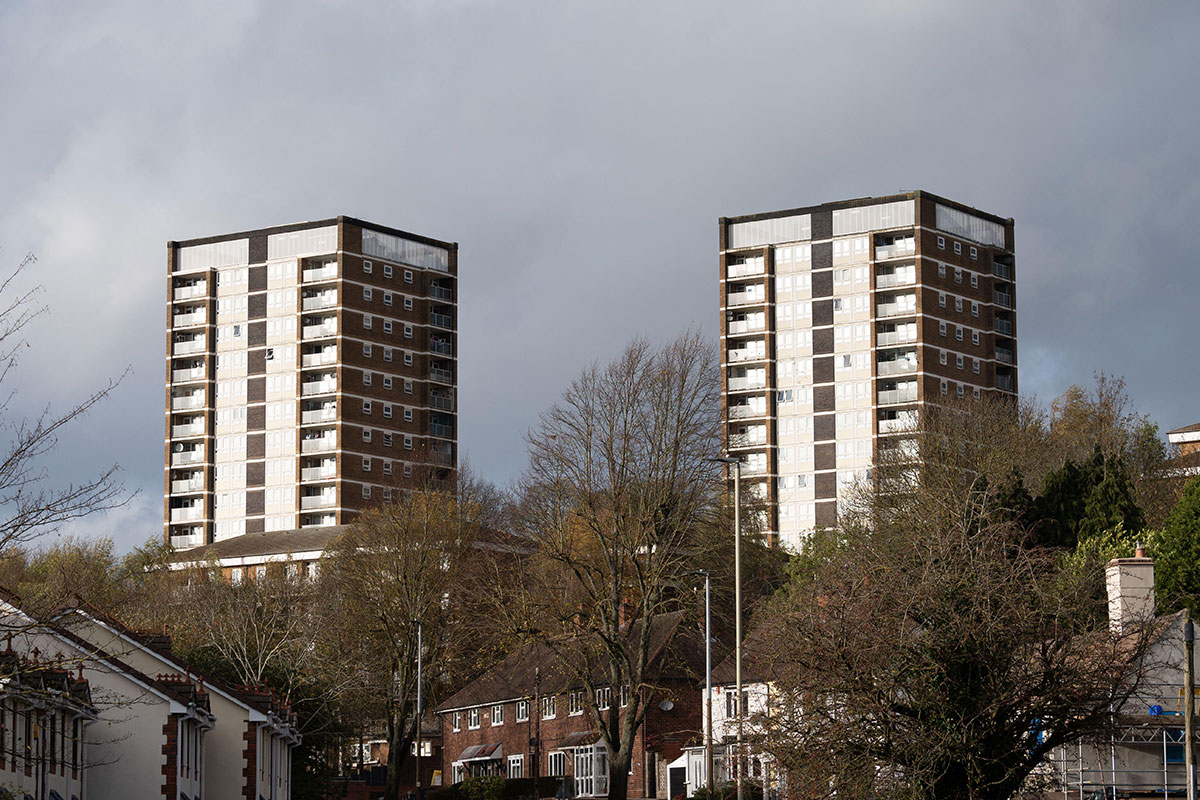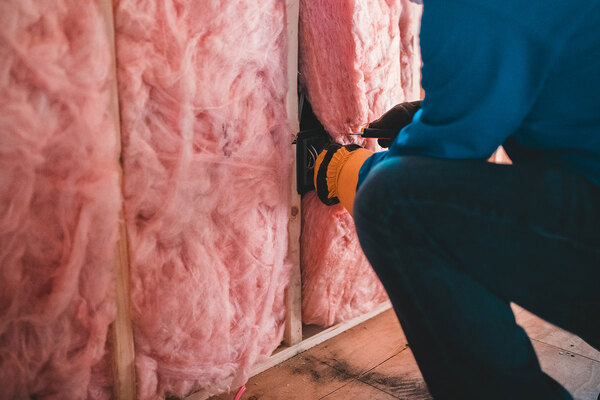Homelessness, housing need and the economic impact of social housing: the quarter’s best research in the Thinkhouse Review
In the first quarter of the year, research made the case for more funding for social housing, and gave us some ideas about how best to approach homelessness. Emily Pumford, Professor Peter Williams and Brian Robson round up the sector’s best housing research over the first three months of 2024
An in-depth look at rough sleeping – by Emily Pumford, Riverside
The latest government figures show that homelessness is still on the rise, and the number of households living in temporary accommodation is at an all-time high. Couple this with the fact that winter is a particularly dangerous time to be homeless or sleeping rough, and two reports from Shelter and Crisis should be essential reading for anyone in the sector.
Shelter’s report, Homelessness in England 2023, focuses on the numbers, setting out the scale of homelessness in 2023 and the areas where it is most acute.
Using sources including the Department for Levelling Up, Housing and Communities’ temporary accommodation tables, official rough sleeping counts, hostel bedspace data from Homeless Link and social services accommodation data, results suggest that on a given night in 2023 there were more than 309,000 people who were homeless. This is equivalent to one in 182 people.
This number is staggering, but Shelter’s report doesn’t stop there, providing insight into the people behind the numbers and the reality for some of the families facing homelessness and living in unsuitable temporary accommodation.
The report from Crisis, ‘I always kept one eye open’: The experiences and impacts of sleeping rough, focuses mainly on rough sleeping (as the title would suggest).
As well as considering the numbers of people sleeping rough – a figure that grew by 26% between 2021 and 2022 – and the reasons people end up sleeping rough (including mental and physical health issues, relationship problems and poor-quality, inaccessible accommodation), this report looks at how people feel on their first night sleeping rough, their experiences of violence and abuse and the varied impacts on their health.
Again, the findings are shocking. Overall, nine out of 10 people experienced at least one form of violence, abuse or theft while sleeping rough, with 70% of the last incidents reported by participants in the research being perpetrated by a member of the public.
The physical effects reported include a lack of sleep, limited protection from sun, rain and cold, malnutrition and the impacts of self-medicating with alcohol and drugs. Participants also reported a range of mental health issues including psychosis, anxiety and depression.
These reports highlight the issues we are currently facing around homelessness and rough sleeping. They present new data, they look at data we’ve seen before in new ways and they take an in-depth look at the people behind this data and the effects homelessness is having on them.
What these reports don’t do is present us with a new problem (or even necessarily a new way of fixing an old problem). It’s not the first time that Thinkhouse, a free library of UK housing research, has published reports on homelessness and it’s not the first time that one of my colleagues on the Thinkhouse editorial panel has talked about the latest homelessness research in this column – it’s not even the first time in the past year.
For this reason, I wasn’t originally going to talk about the latest research on homelessness.
But the fact that this is such an ongoing problem is the reason we need to draw attention to it as often as we can. During the pandemic, measures such as Everyone In showed the positive impact that taking action on rough sleeping can have, but crisis measures like this can only go so far.
For years, the sector has been calling for long-term strategic funding to help end homelessness and rough sleeping. In its report, Crisis recognises that this doesn’t mean that no one will ever lose their home, but that homelessness will be prevented where possible and that when it does happen there will be a quick and safe solution. The charity is calling on the government to commit to comprehensive policies, including prevention programmes, Housing First initiatives and increased investment in homes for social rent.
And now that we are in a general election year, this kind of research couldn’t be more applicable in steering our political leaders to make manifesto pledges that commit us to ending homelessness and providing a housing system that works.
Actions speak louder than words, but words can goad – by Professor Peter Williams, University of Cambridge
The reports I am going to discuss are all set against the backdrop of housing provision under considerable strain and each highlights the failings of the current system and the growing backlog of issues to attend to. It is not a pretty picture.
The Crisis-funded Homelessness Monitor: Scotland 2024 is the latest in this long-running series produced by academics at Heriot-Watt University. This edition again powerfully illuminates the building pressures in Scotland around people presenting as homeless, with 16 of the 30 authorities saying it had increased significantly. Not surprisingly, the use of temporary accommodation was increasing and the modelled outlook to 2026 was far from positive. At the same time, this work suggested that government measures could bring it down, although the long-term decline in the number of social lettings remains a real barrier. As elsewhere in the UK, a lot turns of the future direction of the Local Housing Allowance.
The Centre for Homelessness Impact report is focused on refugees and their progression through the complex routes they take before securing proper resettlement or ending up homeless.
The prevailing furore around migration and the ‘British homes for British workers’ agenda might give rise to the thought that refugees, even those in official channels, have an easy time – but that is very far from the truth. The lack of move-on accommodation and the difficulties in establishing their status and any right to remain does mean that a not-insignificant number of those given temporary asylum help will end up sleeping rough.
Even those in established programmes were not immune from this, with the report flagging up particular difficulties with the Homes for Ukraine scheme.
Meanwhile, the Collaborative Housing and Innovation in Care (CHIC) report from the University of Bristol includes in-depth interviews and focuses on six collaborative housing schemes in England and the informal care and support they offered. There were many positives, as well as disappointment that neither social housing providers nor developers are not doing more in this space.
The House of Commons Health and Social Care Committee report on healthy places widens the focus and drills down on why healthy homes are important and what the government needs to do about it, for instance, upgrading the Decent Homes Standard.
Our shared future, a white paper from the Town and Country Planning Association, carries this same argument, extending it to healthy places and in a different direction: new towns. All three are rightly pushing at different solutions to a set of interrelated problems. What we need is some action.
There were two more reports worth mentioning. Membership body Homes for Scotland’s independent study, Existing Housing Need in Scotland, argues that housing need is even higher than official estimates, and the organisation’s chief executive makes no bones about the reality that a more prosperous Scotland centred around a pragmatic and inclusive housing system is central: “We cannot fully solve a problem if we are not first adequately measuring it.” And so say all of us!
A similar cry for recognition emerges from our last listing, produced by charity Independent Age. The study No place for older renters: How the geography of older private and social renters has changed is timely and detailed.
The research finds that the distribution of older social and private renters is far from equal across England, with the housing crisis leading to an ever-greater concentration of older renters in areas of deprivation. Ever more resources will be demanded as the population ages. It is yet another ticking time bomb.
Actions speak louder than words but words we need to goad governments into recognition of the problems and the actions that must follow. There is a lot of food for thought here.
The stagnant state of housing policy in England – by Brian Robson, Oak Foundation (writing in a personal capacity)
There were two standout reports last month that I think tell us something about the stagnant state of housing policy in England.
First up, the Competition and Markets Authority’s (CMA) Housebuilding market study. This 173-page report, produced in response to a request from housing secretary Michael Gove, is a comprehensive tour d’horizon. But do we learn anything new?
In a sentence that could win awards for understatement, the report notes that “the housebuilding market is not delivering well for consumers”. A later paragraph provides an equally succinct summary of the situation we find ourselves in: “The housebuilding sector is not delivering the number of homes which governments and a number of other sources have assessed are needed.”
Many of these observations could have been made at any time over the past 20 years – the only differentiator being that the situation is even more acute today. Similarly, when we get to the CMA’s recommendations, we find an equally familiar set of options: “more objective and effective use of targets to ensure housing need is met” and “streamlining the planning systems”.
We might expect a CMA report to be concerned with diversity of supply, and indeed under the heading ‘Measures to support a higher build-out rate’ there are sensible suggestions on requiring a greater diversity of housing types and tenures on larger sites.
The thinking here is that the housing market is actually a series of smaller individual markets. The greater the diversity of house types and tenures on offer, the more markets are being catered to, and the faster that overall build-out can proceed without risking oversupply in any one individual market.
These sensible diversification proposals might be familiar to anyone who remembers the very similar conclusions of Sir Oliver Letwin’s Independent review of build out, commissioned by another secretary of state just seven years ago.
None of this is a criticism of the CMA’s officials, who I am sure are dedicated public servants. But how many more expert reports like this need to be published before we collectively decide to redesign the systems that continue to produce such poor outcomes?
One change to the system that would diversify supply and increase build-out rates would be a much larger social housing programme, and this is exactly the scenario which the second report, The economic impact of building social housing, seeks to model.
CEBR has worked on behalf of Shelter and the National Housing Federation, modelling the economic impact of a programme to build 90,000 social rent homes per year.
It’s worthy stuff, and although it’s a case that has been made countless times before, the numbers are still striking: CEBR found that an £11.8bn investment from government to build 90,000 social rent homes would lever £23.5bn of other funding, and lead to a net-positive social and economic impact of some £51.2bn.
But if these kind of numbers haven’t shifted the dial before, what reason is there to think they will now? Especially when the report authors accept that lack of housebuilding capacity means such a proposal is “unlikely to be achievable” at present.
It feels to me that we’re stuck in a housing Groundhog Day. Report after report makes the same case, but policy continues to stagnate, with all the economic and social consequences that entail. What will it take to break the deadlock and make fundamental change to our broken housing system?
Emily Pumford, policy and strategy advisor, Riverside; Professor Peter Williams, researcher and departmental fellow, Department of Land Economy, University of Cambridge; and Brian Robson, director of housing and homelessness, Oak Foundation (writing here in a personal capacity)
Sign up for our homelessness bulletin
Already have an account? Click here to manage your newsletters














